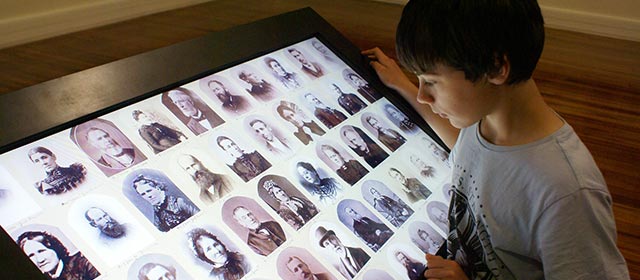He korero whakarapopoto
Museums in New Zealand culture
Museums began as places which collected and displayed artefacts. Museums have changed over time to reflect the society around them, combining education and entertainment.
New Zealand has a high number of museums for its population – in 2013 there was one museum for every 9,500 people. Most of them are small local museums staffed by volunteers. The biggest in New Zealand is the Museum of New Zealand Te Papa Tongarewa – usually called Te Papa – the national museum in Wellington.
The foundation years, 1850 to 1900
The first four major museums were founded in Auckland, Wellington, Christchurch and Dunedin in the 1850s and 1860s. They all focused on natural history, particularly geology. Some also had Māori artefacts, including meeting houses and canoes. Museums were usually quite cluttered as they tended to put all of their collections on display.
Ethnology, research and building projects, 1900 to 1945
In the early 20th century museums became more interested in Māori culture and ethnology. Research and public education became more important.
In the 1920s and 1930s more museums were built. The Auckland War Memorial Museum and the Dominion Museum in Wellington both moved to new buildings.
Museums expand and diversify, 1945 to 1990
After the Second World War, following international trends, more museums opened. They often had a specific purpose, for example transport museums or heritage parks. Staff of larger museums became more specialised and highly trained. However, many small museums were still run by volunteers.
Museums began to focus more on New Zealand history – the history of European settlers in the country had previously not usually been considered worthy of study.
In the 1980s, after the Te Māori exhibition of Māori art toured the United States, there was more Māori involvement in how Māori material and culture was treated in museums.
New museums for the new century, 1990 to the 2000s
In the 1990s and 2000s many museums opened, including the Museum of New Zealand Te Papa Tongarewa (Te Papa) in Wellington, Puke Ariki in New Plymouth and Aratoi in Masterton. Many were often also art galleries, archives, libraries or tourist information centres.
There are courses in museum studies at Auckland, Massey and Victoria universities. Museums Aotearoa is the professional organisation for museum staff.





